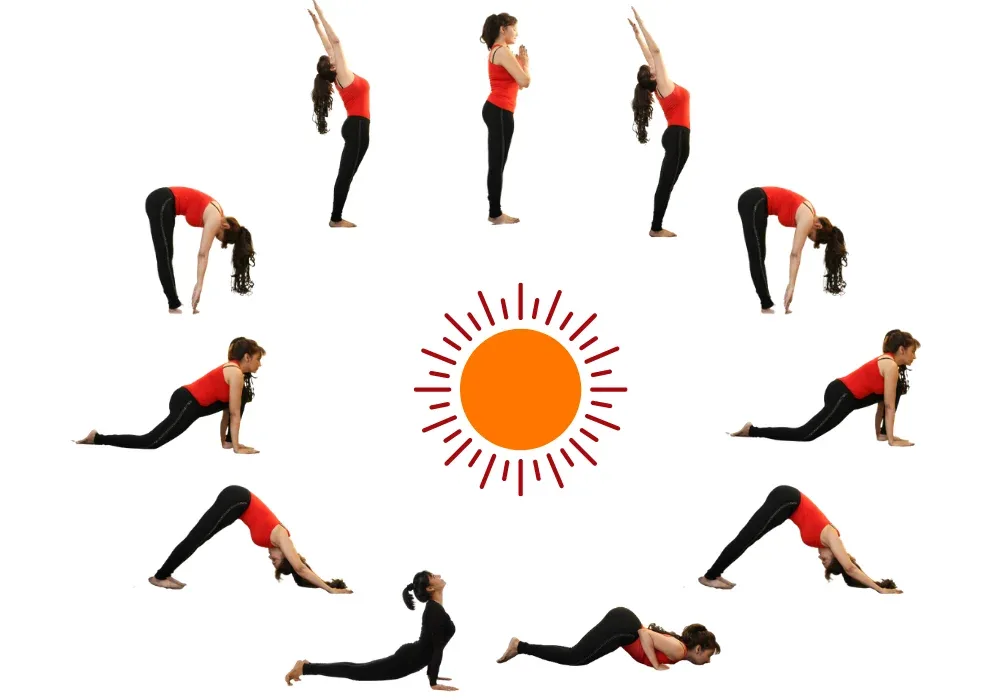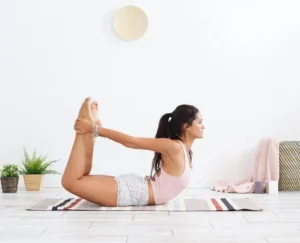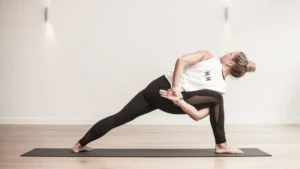Ashtanga Yoga has been practiced for centuries as a holistic approach to physical, mental, and spiritual well-being.
Among the various yoga styles, Ashtanga yoga stands out for its dynamic sequences of postures (asanas) and synchronized breathwork (pranayama). While often associated with flexibility and stress relief, can Ashtanga yoga truly build muscle?
Introduction to Ashtanga Yoga
Ashtanga yoga, popularized by K. Pattabhi Jois, follows a specific sequence of poses designed to create heat in the body and purify it through sweat. It comprises a series of flowing movements linked with deep breathing, providing practitioners with a vigorous and dynamic practice.
Understanding Muscle Building
Muscle building, also known as muscle hypertrophy, occurs when muscles undergo stress and subsequent repair, resulting in increased size and strength. Traditional methods of muscle building often involve resistance training with weights or machines. However, yoga, including Ashtanga, can also contribute to muscle development.
Benefits of Ashtanga Yoga for Muscle Development
Increased Strength and Endurance
Ashtanga yoga requires practitioners to support their body weight in various poses, effectively engaging muscles throughout the body. Over time, this can lead to increased strength and endurance, particularly in the arms, shoulders, core, and legs.
Balanced Muscle Development
Unlike isolated strength training exercises, Ashtanga yoga promotes balanced muscle development by targeting multiple muscle groups simultaneously. The practice emphasizes functional movements that enhance overall strength and coordination.
Improved Flexibility and Range of Motion
While not directly related to muscle size, improved flexibility and range of motion facilitated by Ashtanga yoga can optimize muscle function and prevent injuries. Flexible muscles are less prone to strains and sprains during physical activity.
Key Poses in Ashtanga Yoga for Muscle Building
Surya Namaskar (Sun Salutations)
The Sun Salutations form the cornerstone of Ashtanga yoga practice, incorporating a series of dynamic movements that target the entire body. Each repetition strengthens and stretches different muscle groups, promoting overall muscle development.
Standing Poses
Standing poses such as Warrior series and Triangle pose challenge lower body muscles, including the quadriceps, hamstrings, and glutes, while also improving balance and stability.
Arm Balances
Poses like Crow pose and Side Crow pose require significant upper body strength and stability, helping to build muscle in the arms, shoulders, and core.
Core Strengthening Poses
Ashtanga yoga includes numerous poses that target the core muscles, including Boat pose, Plank pose, and Navasana (Boat pose). These poses engage the abdominal muscles, obliques, and lower back, promoting core strength and stability.
The Role of Breathing Techniques
In addition to physical postures, Ashtanga yoga emphasizes the importance of breath control through techniques such as Ujjayi Pranayama (Victorious Breath) and Bandhas (Energy Locks). Proper breathing enhances oxygenation of the muscles, improves endurance, and facilitates relaxation.
Ashtanga Yoga vs. Traditional Strength Training
While Ashtanga yoga may not replicate the intensity of traditional strength training with weights, it offers a unique approach to muscle development. Unlike weightlifting, which primarily targets specific muscle groups, Ashtanga yoga promotes holistic strength and flexibility.
Understanding Muscle Adaptation
Muscle adaptation occurs when muscles are subjected to progressively challenging stimuli, leading to growth and increased strength. In Ashtanga yoga, practitioners can achieve muscle adaptation by gradually advancing through the sequences and holding poses for longer durations.
Incorporating Ashtanga Yoga into Your Fitness Routine
To maximize the muscle-building potential of Ashtanga yoga, consistency is key. Aim to practice regularly, gradually increasing the intensity and duration of your sessions. Listen to your body and modify poses as needed to prevent injury and promote recovery.
Nutritional Considerations for Muscle Growth
In addition to regular practice, proper nutrition plays a crucial role in muscle development. Ensure an adequate intake of protein, carbohydrates, and healthy fats to support muscle repair and growth. Stay hydrated and prioritize post-workout recovery with nutritious meals and sufficient rest.
Maximizing Muscle Building Potential
To optimize muscle building with Ashtanga yoga, focus on maintaining proper form and alignment in each pose. Avoid rushing through sequences and prioritize quality over quantity. Allow time for rest and recovery to prevent overtraining and promote muscle repair.
Real-Life Experiences and Testimonials
Many individuals have experienced significant improvements in muscle tone, strength, and overall fitness through consistent practice of Ashtanga yoga. Real-life testimonials highlight the transformative power of this dynamic yoga style in sculpting the body and enhancing well-being.
Common Misconceptions About Ashtanga Yoga and Muscle Building
Despite its numerous benefits, Ashtanga yoga may face misconceptions regarding its effectiveness in muscle building. Some people believe that yoga is primarily for relaxation and flexibility, overlooking its potential for strength and endurance development.
Safety Precautions and Injury Prevention
As with any physical activity, it’s essential to practice Ashtanga yoga mindfully and with awareness of your body’s limitations. Avoid pushing yourself too hard and honor your body’s signals to prevent injury. Consult a qualified yoga instructor for guidance and modifications as needed.




